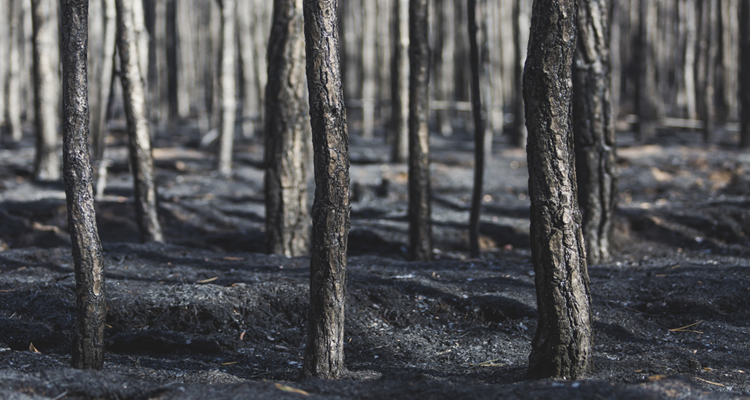Exposed Wires May Have Sparked Deadly Eaton Fire, Legal Filing Suggests
A new legal filing claims that exposed wires at a Southern California Edison tower may have ignited the Eaton Fire. Investigations continue into the cause of the devastating Los Angeles blaze.
Exposed Wires at SCE Tower May Have Sparked Eaton Fire, Attorneys Allege
A legal battle is unfolding over the cause of the devastating Eaton Fire, which scorched parts of Los Angeles earlier this month. Newly submitted images in a legal filing suggest that exposed wiring at the base of a Southern California Edison (SCE) transmission tower may have played a role in the ignition of the deadly blaze. The allegations add weight to growing scrutiny over the utility company’s equipment and its potential link to one of the most costly wildfire disasters in U.S. history.
Evidence Points to Electrical Arcing as a Possible Fire Source
The fire erupted on January 7, fueled by powerful Santa Ana winds that propelled flames across dry landscapes. While initial lawsuits against SCE already included video footage showing sparks or flames near transmission equipment, the latest photos—submitted by a law firm representing fire victims—may be the first to document charred, exposed, or unburied electrical wiring at the base of an SCE tower.
According to attorney Alexander Robertson, who is leading the lawsuit, these images reveal a significant fire hazard. “The exposed grounding wire is clearly burnt and may have acted like a wick, igniting dry brush at the base of the tower,” Robertson stated. He further explained that during instances of electrical arcing, exposed wires can overheat and send showers of sparks and molten metal onto nearby vegetation, potentially setting off a blaze.
Southern California Edison Responds to Allegations
The cause of the Eaton Fire remains under investigation by official agencies, including California fire authorities and SCE itself. While the utility company has acknowledged reviewing evidence, spokesperson Kathleen Dunleavy pushed back against the legal team’s decision to release potential evidence to the media rather than to investigators.
“Our investigation into all possible involvement of SCE’s equipment continues,” Dunleavy stated, emphasizing the company’s commitment to cooperating with authorities.
Earlier this week, SCE claimed that an initial review of its data for transmission lines in the affected area showed no indication of faults until more than an hour after the reported start of the fire. Electrical faults, such as arcing, occur when an electrical current jumps between conductors, creating intense heat and potential ignition sources.
Drone Footage and Surveillance Video Add to Investigation
In their effort to gather evidence, Robertson’s legal team deployed drones to inspect the transmission towers along the foothills near Altadena. Their findings support earlier reports from surveillance footage, which captured two brief arcs at the top of an SCE tower. This video, first obtained by the New York Times, has since been included in legal filings against the utility company.
The footage suggests that electrical activity may have occurred at the transmission site shortly before the fire’s ignition. If confirmed, it could be a critical piece of evidence linking the Eaton Fire’s origins to malfunctioning or poorly maintained infrastructure.
A History of Utility-Linked Wildfires
This case is the latest in a troubling pattern of wildfires potentially linked to aging utility equipment in California. Over the past decade, major fires—including the 2018 Camp Fire, which destroyed the town of Paradise—have been attributed to electrical failures. PG&E, California’s largest utility provider, was held legally responsible for multiple fires and forced into bankruptcy due to mounting liabilities.
If the exposed wiring at the SCE tower is found to have contributed to the Eaton Fire, the company could face significant legal and financial consequences, adding to the broader conversation about wildfire prevention and utility accountability in fire-prone regions.
What Comes Next?
For now, the investigation into the Eaton Fire’s origins remains ongoing. Both the legal team and fire authorities will continue analyzing evidence, including the newly submitted photographs and surveillance footage. Meanwhile, residents affected by the fire are seeking accountability as they attempt to rebuild their lives.
As wildfire risks continue to grow, utility companies may face increasing pressure to upgrade infrastructure, implement better fire prevention measures, and take responsibility for potential safety lapses. Whether the latest evidence will hold up in court remains to be seen, but one thing is clear: the fight for answers—and justice—is far from over.
Source: (Reuters)
(Disclaimer: The information in this article is based on publicly available reports and legal filings. The cause of the Eaton Fire remains under investigation, and official findings may change as new evidence emerges. Readers should refer to authorities for the latest updates.)
Also Read: US Tech Leaders Alarmed by China’s AI Distillation Practices











